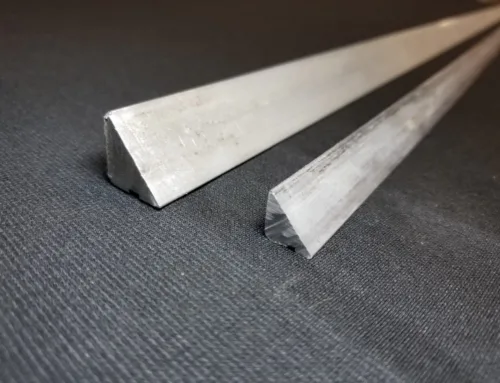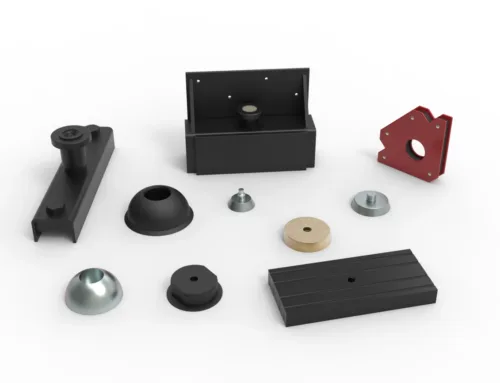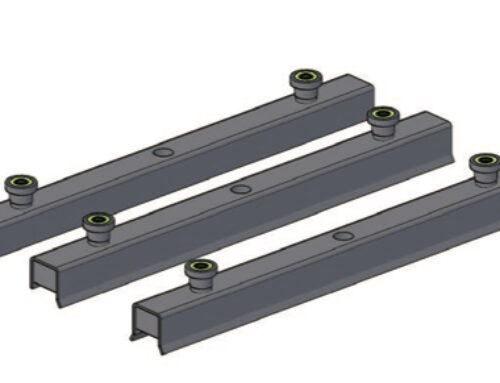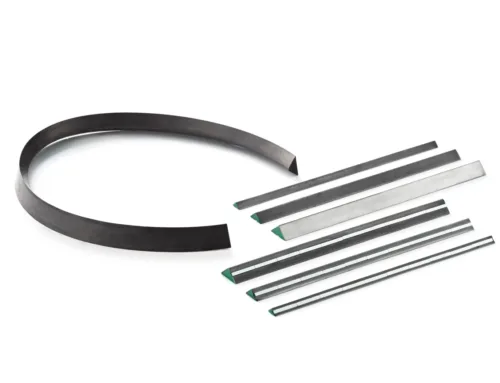If you’re diving into the world of magnets, you’ve probably come across the term L/D ratio and wondered why it matters so much. Simply put, the L/D ratio—or length-to-diameter ratio—is a crucial geometric factor that defines how a magnet’s shape influences its magnetic performance. Whether you’re an engineer designing precision magnetic components, a student learning magnetics, or a product developer selecting the right magnet, understanding the L/D ratio in magnets is key to optimizing strength, efficiency, and stability.
In this post, you’ll get a clear breakdown of what the L/D ratio means, how it’s calculated for different magnet shapes, and why it plays such a pivotal role in magnetic field distribution and material behavior. Ready to unlock the science behind magnet design and how the L/D ratio can make or break your application? Let’s get started!
What is the L/D Ratio in Magnets
When working with magnets, especially cylindrical ones, you might hear about the L/D ratio. So, what exactly is it? The L/D ratio stands for Length to Diameter ratio. It’s a simple way to describe the shape of a magnet by comparing how long it is (length) to how wide it is (diameter).
Defining Length to Diameter Ratio
- Length (L): This is the measurement from one end of the magnet to the other, along its longest side.
- Diameter (D): This is the width across the magnet, measured through its center if it’s cylindrical or round.
The L/D ratio is calculated by dividing the length by the diameter:
L/D Ratio = Length ÷ Diameter
Calculating L/D Ratio for Cylindrical Magnets
For typical cylindrical magnets, this is straightforward:
- Measure the length of the magnet using a ruler or caliper.
- Measure the diameter (widest part across the round face).
- Divide length by diameter.
If a magnet is 20 mm long and 10 mm in diameter, the L/D ratio is 2 (20 ÷ 10 = 2).
L/D Ratio for Other Shapes
While most commonly used for cylinders, the concept applies to other shapes too:
- Rectangular magnets: Usually length to width ratio instead.
- Ring magnets: Consider thickness as length and outer diameter for ratio.
- Custom shapes: Measure the key dimension similar to length and the largest cross-section for diameter.
Visualizing L/D Ratio
Imagine a cylinder that looks tall and skinny versus one that’s short and thick. The tall, skinny one has a high L/D ratio, and the short, thick one has a low L/D ratio. This simple ratio immediately tells you if a magnet is elongated or squat, which affects how it performs.
Here’s a quick overview:
| Magnet Shape | Length (L) | Diameter (D) | L/D Ratio (L ÷ D) |
|---|---|---|---|
| Tall Cylinder | 30 mm | 10 mm | 3 |
| Short Cylinder | 10 mm | 10 mm | 1 |
| Thick Cylinder | 10 mm | 20 mm | 0.5 |
Understanding this ratio is the first step to grasping how a magnet’s shape plays a role in its magnetic properties and application.
Why L/D Ratio Is Important in Magnetic Materials

The L/D ratio, or length-to-diameter ratio, plays a big role in how a magnet behaves. It directly affects the magnetic field distribution, meaning how the magnetic field spreads out from the magnet. A higher or lower L/D ratio changes where the magnetic field is strongest and how focused it is.
This ratio also impacts key performance factors like:
- Magnetic flux density: The strength of the magnetic field near the magnet’s surface changes with different L/D ratios.
- Coercivity: How resistant the magnet is to losing magnetization can depend on its shape and size proportions.
- Remanence: The level of residual magnetism left after an external magnetic field is removed is influenced by L/D.
Optimizing the L/D ratio helps make magnets perform better for specific uses. For example, a magnet designed for holding tools might need a different ratio than one used in electric motors. By adjusting the L/D ratio, manufacturers can tailor magnetic strength and efficiency to fit the space and performance needs of each application. This shape optimization improves reliability and overall magnetic effectiveness.
L/D Ratio Impact on Magnet Types
The L/D ratio plays a different role depending on the type of magnet you’re working with. For common magnets like Neodymium, Ferrite, and Alnico, the length to diameter ratio influences magnetic stability, efficiency, and overall performance in unique ways.
Neodymium Magnets
- Typically have smaller L/D ratios (around 0.5 to 2) because they’re strong even when compact.
- A higher L/D ratio here can focus the magnetic field better but might reduce mechanical stability.
- Used in electronics and precision tools where space and strong fields matter.
Ferrite Magnets
- Often have larger L/D ratios (1 to 5), as their lower strength benefits from elongated shapes to enhance magnetic flux density.
- More efficient in motors and speakers where a consistent magnetic field along the length is needed.
Alnico Magnets
- Have moderate L/D ratios (around 1 to 3) due to their balance of magnetic strength and temperature stability.
- Used in sensors and pickups where both shape and thermal performance matter.
Industry Examples
- In the automotive sector, wheel speed sensors often use magnets with an L/D ratio near 1 for balanced strength and size.
- For magnetic couplings, longer magnets with high L/D ratios improve grip and torque transfer.
- Consumer electronics favor shorter, wider magnets (low L/D) to fit compact spaces while maintaining power.
Effects on Stability and Efficiency
- A well-chosen L/D ratio improves magnetic stability by reducing demagnetizing fields.
- Efficiency goes up when the magnet shape complements its field direction and intended use.
- Poor L/D choices can lead to wasted material or weakened magnetic output.
Knowing how L/D ratio affects different magnet types helps you pick the best shape for your project, cutting down costs and boosting performance.
How to Choose the Right L/D Ratio for Your Application
Picking the right L/D ratio for your magnet mainly depends on your project’s needs. Here’s what to keep in mind:
-
Space Constraints
Measure the space where the magnet will fit. A high L/D ratio means a longer magnet, while a low ratio is more squat. Make sure the magnet shape matches your physical limits.
-
Magnetic Field Requirements
Think about how strong and how focused you need the magnetic field to be. Longer magnets (higher L/D) tend to produce more directional fields, while shorter ones spread the field out more.
-
Directional Needs
If you want the magnet to target a specific area or direction, choosing the right ratio helps optimize field shape and strength.
Practical Examples of L/D Ratio Adjustments
- In one case, switching from an L/D ratio of 0.5 to 2 on a cylindrical neodymium magnet improved the flux density in a tight sensor setup, enhancing detection accuracy without increasing size.
- Another example showed that lowering the L/D ratio on an Alnico magnet reduced magnetic interference in a nearby circuit, making the system more stable.
Recommendations from NBAEM Magnetic Suppliers
NBAEM, a well-known Chinese magnetic material supplier serving the US market, suggests:
- Review your application’s environment and adjust L/D ratio accordingly to balance space and magnetic output.
- Work closely with suppliers like NBAEM to customize magnet shapes based on your unique field and size requirements.
- Test prototypes with varied L/D ratios to find the sweet spot for your design.
Choosing the right L/D ratio isn’t one-size-fits-all. It’s about matching magnet shape to your application’s real-world needs for the best performance.
Calculation and Measurement Techniques for L/D Ratio

Measuring the L/D ratio—length to diameter ratio—is pretty straightforward, but getting it right matters a lot for your magnet’s performance. Here’s how to do it and what tools professionals use, especially in the industry.
Step by Step Guide to Measure Length and Diameter
- Measure Length (L)
- Use a caliper or micrometer to measure the magnet’s length from one flat end to the other.
- Make sure the magnet is straight and lying flat for an accurate read.
- Measure Diameter (D)
- For cylindrical magnets, measure the diameter across the widest part of the circular face.
- Again, a caliper works best for precision.
- Calculate L/D Ratio
- Divide the length by the diameter (L ÷ D).
- For example, if your cylinder is 20 mm long and 10 mm wide, the L/D ratio is 2.0.
Tools and Methods Used in Industry
- Digital Calipers: Most common for quick, accurate length and diameter measurements.
- Micrometers: Used for higher precision, especially with smaller sizes.
- Coordinate Measuring Machines (CMM): For complex shapes and mass production, ensuring tight tolerances.
- Optical Measurement Systems: Laser scanning helps when dealing with delicate or non-standard magnets.
NBAEM’s Quality Assurance Process
NBAEM, a trusted magnetic material supplier from China, follows strict QA steps to make sure magnet dimensions and L/D ratios meet your specs:
- Initial Inspection: Raw magnets are checked upon production for size accuracy.
- In-Process Checks: Regular sampling during production to ensure consistency.
- Final Verification: Detailed measurement reports before packing and shipping.
- Documentation: Certificates and specs provided for transparency and traceability.
Ensuring the L/D ratio is spot-on means your magnets have the right magnetic field distribution and strength for your project. Whether you’re making sensors, motors, or any magnetic device, this simple measurement keeps things running smoothly.
Advanced Topics L/D Ratio and Magnetic Field Modeling

The L/D ratio plays a big role when using simulation software to model magnetic fields. Engineers plug the length to diameter ratio of a magnet into magnetostatics programs to predict how the magnetic field will spread and behave. This helps in fine-tuning magnet designs before making physical prototypes, saving time and cost.
By tweaking the L/D ratio in simulations, you can see how the shape affects:
- Magnetic flux density distribution
- Field strength and concentration
- Hot spots or weak zones in the magnet
These insights let manufacturers optimize magnets for better stability and efficiency depending on the application.
Looking ahead, research is focusing more on how subtle changes in L/D ratios influence magnetic performance at smaller scales. Advances in modeling tools are making it easier to simulate complex shapes and material behaviors, helping push innovation in magnet design across industries.
In the U.S. market, using advanced L/D modeling software means you get magnets tailored perfectly for your needs, improving product quality and reliability.
Frequently Asked Questions about L/D Ratio in Magnets
Here are some common questions about the L/D ratio in magnets, answered clearly to help both manufacturers and users:
What does L/D ratio mean in magnets?
L/D ratio stands for Length to Diameter ratio. It shows the proportion between a magnet’s length and its diameter, especially important for cylindrical magnets.
Why is the L/D ratio crucial for magnetic performance?
The L/D ratio directly affects the magnetic field shape and strength. A higher or lower L/D can change flux density, coercivity, and overall efficiency.
How do I calculate the L/D ratio for my magnet?
Measure the magnet’s length and diameter with calipers, then divide length by diameter. For example, if length = 20 mm and diameter = 10 mm, L/D = 2.
Does L/D ratio affect all magnet types the same way?
No. For instance, Neodymium magnets may need different L/D settings compared to Alnico or Ferrite magnets, depending on their specific magnetic properties and application.
Can I change the L/D ratio to improve magnet performance?
Yes. Adjusting the L/D ratio can optimize field distribution and strength for your particular use case, such as sensors, motors, or holding devices.
What tools are recommended for measuring L/D ratio accurately?
Digital calipers or micrometers offer precise measurements. Consistent measurement is key to ensuring magnetic specs match design needs.
Are there troubleshooting tips if my magnet isn’t performing as expected?
- Check if the L/D ratio matches design specs
- Verify no manufacturing defects altered geometry
- Test magnetic properties under actual operating conditions
- Consult suppliers like NBAEM for guidance on ideal magnet dimensions
For more details on L/D ratio and magnet design, visit our page on What’s L/D Ratio in Magnet.
If you’re exploring how magnet geometry impacts real-world applications, see our insights into magnetic material demand and innovation.





Leave A Comment